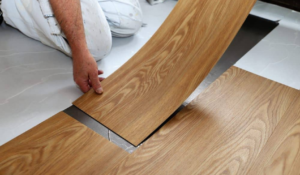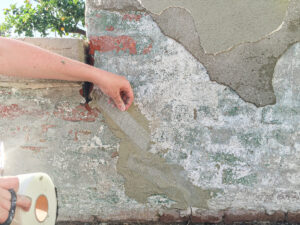If you’re thinking about hiring piano movers, it’s important to take your time in searching for the best company. This means checking out their online reviews and asking for referrals from past clients.
Moving a piano requires special training, equipment, and trucks. It can be extremely dangerous for non-professionals to move, due to its massive weight and uneven distribution. Contact Piano Movers Charleston SC now!

Despite their size and weight, pianos are delicate instruments that require the attention of professional piano movers NYC to move them properly. The complex moving process is not for amateurs who may suffer back injury or damage the instrument. Even a simple local move requires extensive preparations. A few wrong moves can easily damage the piano and leave a bad impression on the client. This is why it is important to hire a professional piano moving company that is licensed and insured.
A good piano mover will prepare the instrument for transportation by disassembling and packing it. They will also use specialized equipment like moving dollies to transport the instrument safely. Piano movers have years of experience and are well-equipped to handle any type or age of piano. Moreover, they know how to properly wrap and protect the instrument from any damage.
Most piano movers charge an hourly rate for their services. However, the total price varies depending on the piano type, the distance of the move and other factors. For instance, a full-sized grand piano is more expensive to move than a spinet. Additionally, if the piano is being relocated across the country, the price will increase.
If you are a homeowner, it is important to choose the right movers for your piano. Choosing the right movers for your house can help you avoid costly damages and injuries. You can find a professional piano mover by asking for references from friends and family members. It is also recommended to read online reviews about a particular piano moving company before hiring them.
Aside from being a delicate musical instrument, the piano is one of the most difficult to move. It is extremely heavy and has a curved body. The most challenging part of moving a piano is getting it into the truck without damaging it. Pianos are large and bulky, so it is important to use proper tools when moving them. You should use a moving dolly, heavy-duty furniture straps or ropes, and furniture blankets. In addition, you should get a strong team of volunteers to help you with the move.
Insurance
Aside from the obvious benefits of hiring professional piano movers, such as minimizing the risk of accidental damage to the instrument, it’s also important to hire movers that have insurance coverage. This ensures that, in the event that your precious musical instrument sustains damage, you’re covered and won’t be left with hefty repair or replacement costs to pay.
Many companies offer special specialized piano moving insurance options to cover the extra care and attention that is required to move these delicate instruments safely. The cost of these insurance premiums is often based on the type and value of the piano, as well as the distance of the move. In addition, the insurance policy may have a deductible or other requirements that must be met before the company will provide compensation in the event of damage or loss.
When selecting a piano moving company, be sure to ask for references or examples of past work. Reputable movers will be happy to provide these references to show that they have the experience and professionalism needed to handle your piano. Additionally, you can also visit their website and social media pages to see photos of recent moves and customer feedback.
Pianos are complex and expensive instruments, so it’s important to work with a reputable and experienced company when having them moved. A reputable piano mover will be able to provide you with proof of insurance and workman’s compensation coverage for their employees. Additionally, they should have a commercial vehicle insurance policy in place to cover the trucks that will be used for transportation.
A separate piano policy is often the best way to procure insurance for a high-value musical instrument like this, as homeowners policies typically only have limited coverage limits on music instruments. Some movers will offer an additional piano mover’s insurance option for an extra fee, but this isn’t as robust as a separate policy and could leave you with insufficient coverage in the event of an accident or loss. A reputable piano mover will be more than happy to provide you with detailed information about their insurance policy and coverage options, as well as the pricing structure for various coverage options.
Specialized Equipment
While you might be tempted to save money by moving your piano yourself, this is a job best left to professionals. Not only are they experienced in the nuances of the instrument, but they also have the proper equipment to ensure a successful move. For example, they will use specialized piano dollies and skid boards that are designed specifically for the weight of your specific piano type. They will also use padded piano blankets to protect the exterior and interior from scratches or dents during transportation.
Other important pieces of equipment include furniture straps and harnesses to distribute the weight evenly and reduce strain on movers’ backs. They will also utilize a sturdy dolly or other rolling device to navigate challenging areas like staircases or narrow passageways. In addition, they will utilize ramps to help load the piano into the truck and unload it once they reach their destination.
You should always choose a company that is licensed and insured. This will give you peace of mind knowing that in case of any damage or accidents, you will be covered. You should also look for reviews and testimonials from previous customers to get an idea of the company’s professionalism and quality of work. In addition, you should make sure that they have experience in moving your particular piano type (upright or grand) as different types require unique handling techniques.
The right movers will prepare the piano before beginning the move. This will include locking the keyboard lid to prevent accidental movement or damage during transit, as well as securing internal components to keep them from shifting. They will also clear the path through which the piano will be transported, removing any obstructions from doorways and hallways as needed.
Lastly, the movers will prepare a floor plan for the move and communicate this to their team members. This will help them navigate through challenging areas of the home or business without causing any damage. They will also make a note of any stairs or other obstacles that may need to be traversed, and they may even remove doors or other furniture temporarily to create a clear path.
Customer Service
When you’re choosing a piano mover, it’s important to consider how they treat their customers. Whether you’re moving your grand or baby grandson’s piano into the house for the first time, or a student’s upright into their school’s music department, piano movers should provide top-notch customer service and care. They should take the time to assess your needs and answer any questions you may have. They should also be able to provide you with a free estimate so that you can budget for the moving costs ahead of time.
When selecting a piano moving company, be sure to ask them for references from previous clients. You can also look for testimonials on their website or social media pages. It’s important to read the reviews carefully, and to find out if any movers had any problems during their relocation. You can then contact these past customers to see if their experiences matched up with what the piano moving company promised.
A good piano mover will be honest with you. They will tell you that there is no way to guarantee that your instrument will not sustain damage during the move. However, they should be able to give you assurances that they will take every precaution possible to protect your piano.
It’s a good idea to make your piano as clean and prepared for the move as possible before the movers arrive. This will help them to work more efficiently, and will ensure that the piano is transported in the best possible condition. This includes removing all personal items from the piano, as well as clearing a path to the piano for transport.

